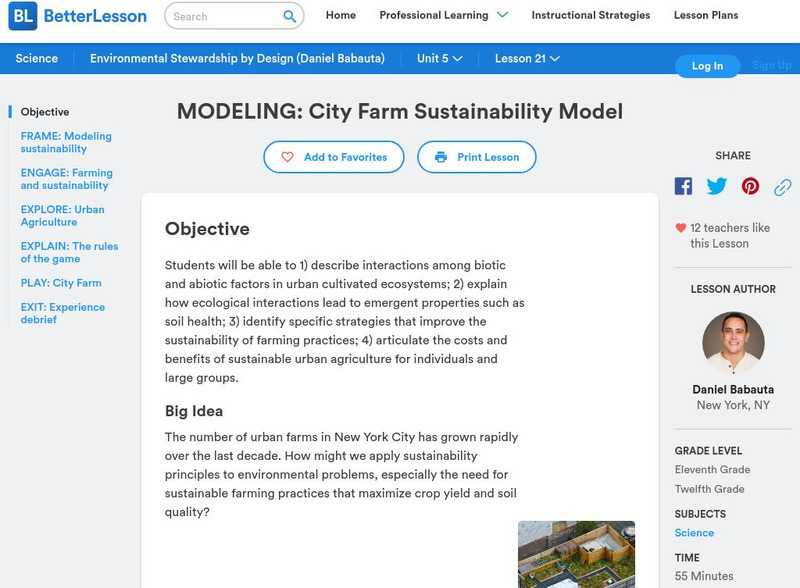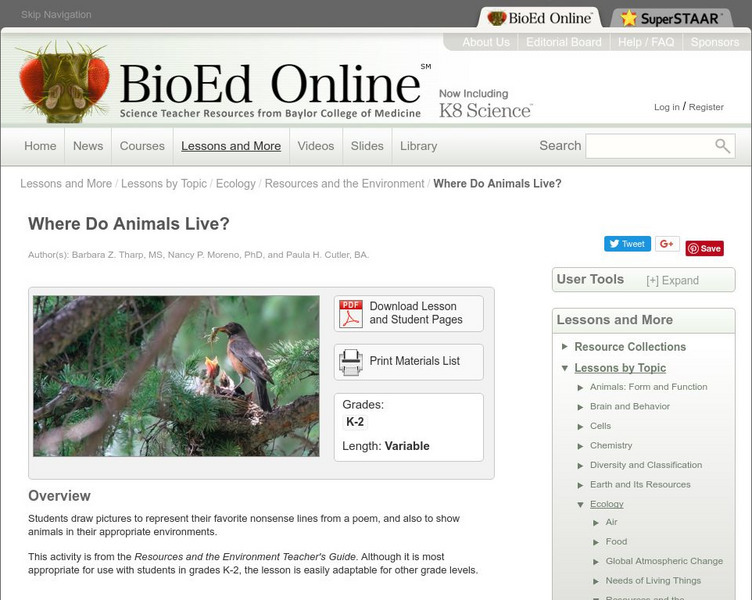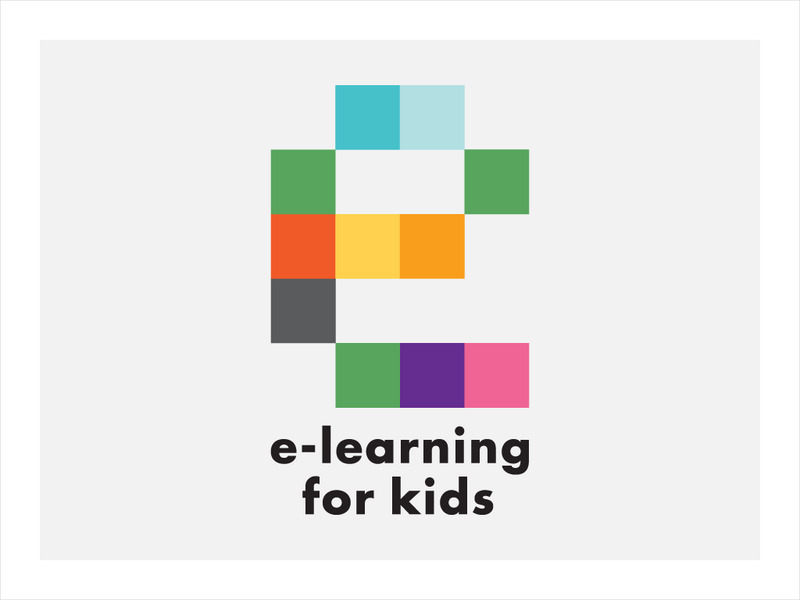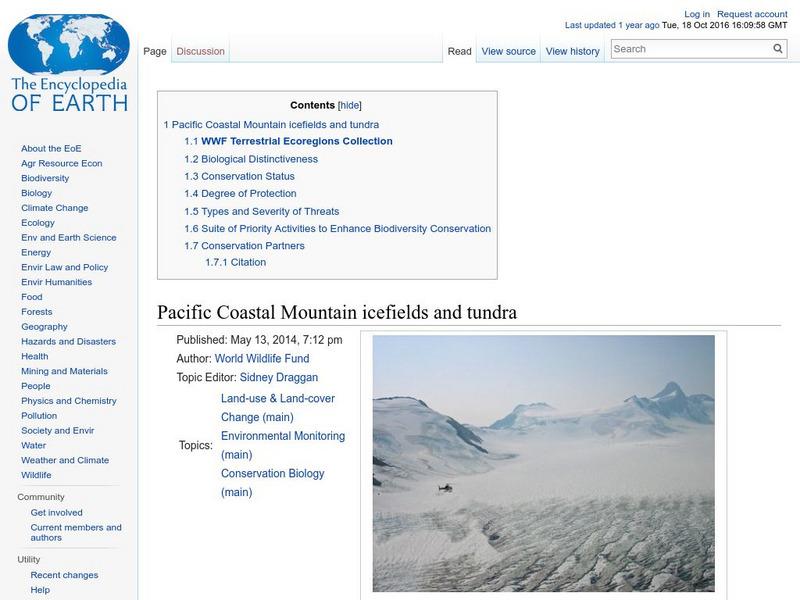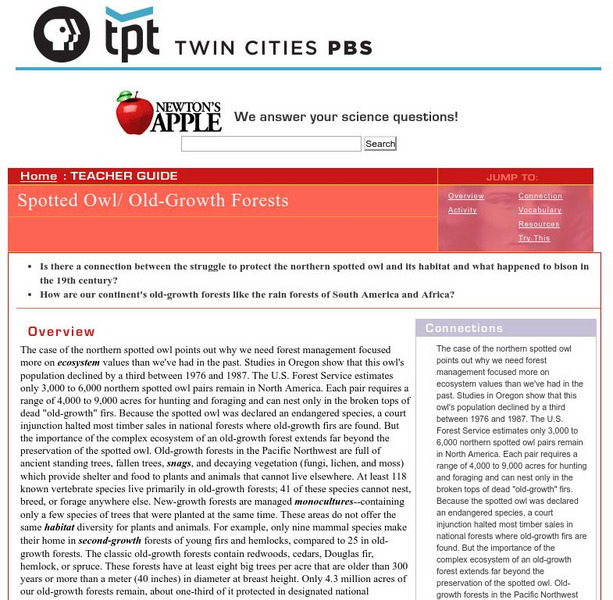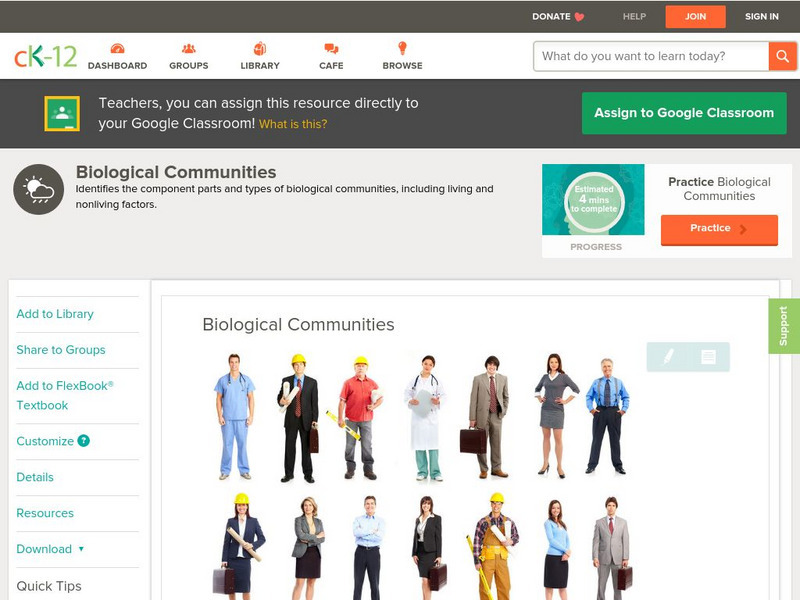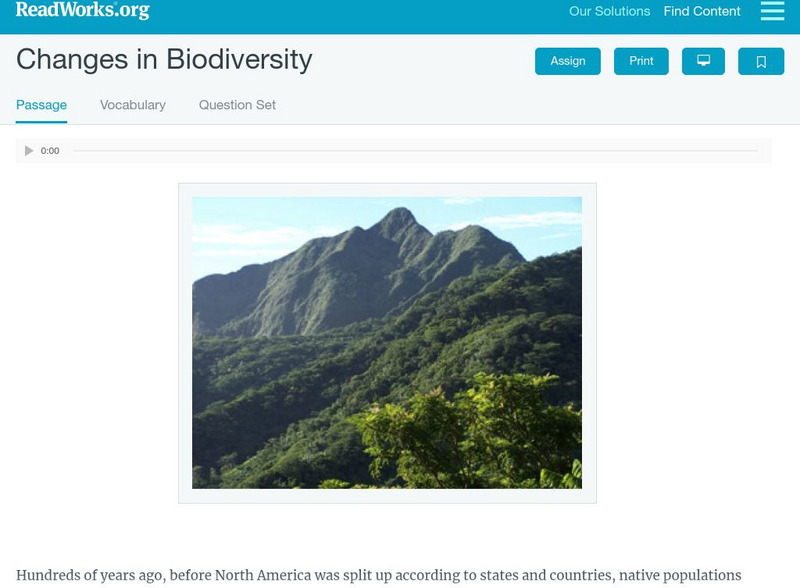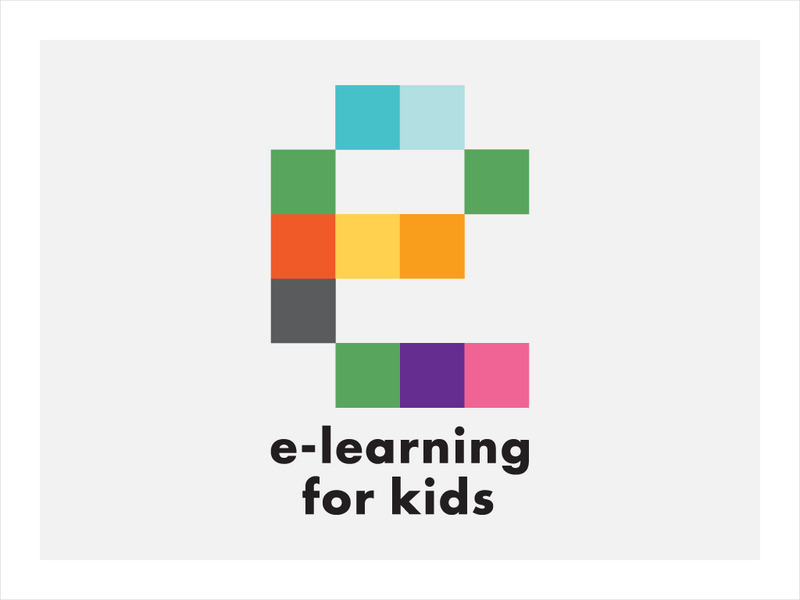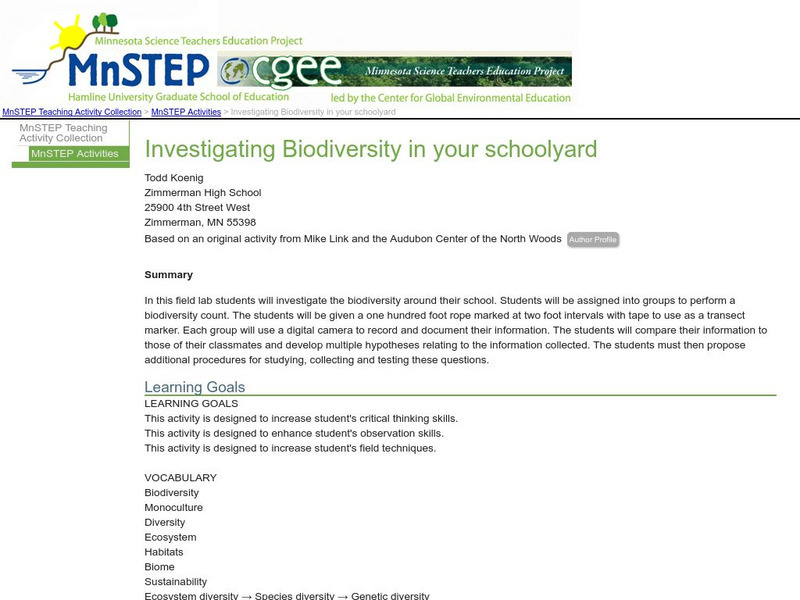PBS
Nova: Explore Madagascar
This resource is a nice overview of Madagascar. Explore the organisms, habitats and geography of Madagascar. Plenty of pictures as well as 360 degree panoramic views make it worth investigating.
Buck Institute
Buck Institute for Education: Pblu: Schoolyard Habitat Project
An example of a project-based learning opportunity that engages students in learning what a healthy habitat is by working within the school's campus to increase opportunity for animals to find food and shelter, maintaining plants, and...
CK-12 Foundation
Ck 12: Episd: Habitat and Niche
[Free Registration/Login may be required to access all resource tools.] Students will identify and present the differences between a habitat and a niche.
Nature Conservancy
Nature Works Everywhere: Native Habitat Garden Tip Sheet
All regions grow special plants naturally which attract specific creatures. This tip sheet will help guide planters to selecting native plants for an area.
Better Lesson
Better Lesson: What Kind of Animals Live on Farms?
A lesson on sustainability of urban farms in particular in New York City. Students learn how to apply sustainability principles to environmental problems. Students will look at the need for sustainable farming practices that maximize...
Utah Education Network
Uen: Trb 4:5 Investigation 1 Wetlands, Forests & Deserts
Learn about surface terrain and how plants and animals are affected by the temperatures and precipitation.
BioEd Online
Bio Ed Online: Where Do Animals Live?
In this lesson plan students listen and participate by filling in missing words as the teacher reads a silly poem about places where animals might live. Students are required to draw pictures representing both their favorite nonsense...
abcteach
Abcteach: Ponds
[Free Registration/Login Required] The abcteach directory contains sample pages from their pond unit for non-members. Handouts are in PDF format.
Thomas Jefferson National Accelerator Facility
Jefferson Lab: Where Plants and Animals Live
Read and fill in the blanks of this passage explaining habitats where plants and animals live. Each blank has a dropdown menu with choices. When you finish, click CHECK MY ANSWERS. If you pick a wrong answer, the right answer will be...
CK-12 Foundation
Ck 12: Biology: Organization of Living Things
[Free Registration/Login may be required to access all resource tools.] How organisms are organized.
E-learning for Kids
E Learning for Kids: Science: Mexico: What Is a Habitat?
Sofia came back from a trip around the world. She noticed how each animal she saw belonged to a certain habitat. Help her learn about animal habitats and the species that live there.
Encyclopedia of Earth
Encyclopedia of Earth: Pacific Coastal Mountain Icefields and Tundra
Describes the geography of this ecoregion, its biodiversity, its excellent conservation status, the parks and wilderness areas within its boundaries, potential threats, and organizations working to ensure its protection. (Updated August...
PBS
Newton's Apple: Spotted Owls and Old Growth Forests
This site from Newton's Apple, which is a production of KTCA Twin Cities Public Television, provides insights, vocabulary, resources and a main activity on the subject of why owls are threatened.
CK-12 Foundation
Ck 12: Earth Science: Temperate Climates
[Free Registration/Login may be required to access all resource tools.] Describes characteristics of temperate climates.
National Institute of Educational Technologies and Teacher Training (Spain)
Ministerio De Educacion: La Accion Humana en Los Ecosistemas.
Throughout this unit, you will see how man change and affects the environment in which they live. You will have a better understanding of our need of matter and energy and the consequences of their use and abuse. It contains 19...
University of Utah
University of Utah: Genetic Science Learning Center: Meet the Microenvironments
Investigate the Great Salt Lake's islands, rivers, and man-made structures that define several diverse microenvironments.
CK-12 Foundation
Ck 12: Earth Science: Biological Communities
[Free Registration/Login may be required to access all resource tools.] Provides an overview of biological communities.
Read Works
Read Works: Changes in Biodiversity
[Free Registration/Login Required] An informational text about changes in biodiversity and the chain reaction of problems they can cause. A question sheet is available to help students build skills in reading comprehension.
Science Education Resource Center at Carleton College
Serc: Carleton College: Living in an Alkaline Environment Web Quest
Create a field guide for organisms living around Mono Lake (an alkaline environment) in this WebQuest. The process for completing this field guide is well laid out along with available resources. There is also a teacher page that gives...
Texas Instruments
Texas Instruments: Jason: Island Fox: A Population in Trouble
Examine the relationship between the island fox and golden eagle populations on Santa Cruz Island over a twelve-year period using the TI-73 Explorer to graph and analyze the values.
PBS
Nh Pbs: Nature Works: Ocean Zones
Discover more about the underocean environment at this site that surveys animals, environmental factors such as light and temperature, currents, animals, plants, and the like.
PBS
Nh Pbs: Nature Works: Ponds
Can you give a definition for a pond? This site provides information ranging from types of plants living in ponds to how ponds were formed. Don't miss out on the photographs found within the site too.
E-learning for Kids
E Learning for Kids: Science: Hawaii: What Can We Find in a Garden?
Daisy is learning all about the animals and plants that live in her beautiful garden. Join her and learn about habitats, too.
Science Education Resource Center at Carleton College
Serc: Investigating Biodiversity in Your Schoolyard
In this field lab, learners will investigate the biodiversity around their school and record and document the information they find. The students will compare their information to those of their classmates, develop multiple hypotheses...






